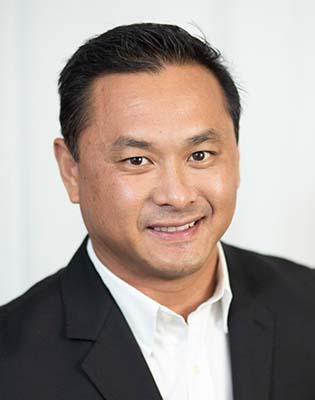
Kentik’s Gonzalo Mannucci
Gonzalo Mannucci, Kentik’s Head of Demand Generation and Field Marketing, has been building solid demand gen foundations for companies for several years. I recently had the opportunity to chat with Gonzalo and hear his perspective on challenges facing demand generation leaders today and in the future. This is a transcript of our conversation.
Vong: I appreciate you taking the time to meet with me Gonzalo. Can you can give us a little background on how you got started with demand generation?
Mannucci: I started my career in sales support at a leading publishing company in New York City, which covered the technology space. I found myself interacting with the marketing department on behalf of sales, and soon became the primary liaison between sales and marketing.
My success in this role led to increasing levels of responsibility, and it made sense to transition the role to marketing. Eventually the role became “demand generation,” and along the way, I earned an MBA. Now, demand generation is a more formalized role that is established in many companies.
Vong: OK, you’re one of those rare marketers who started on the sales side and got to see how the other half works. Can you tell me about Kentik and your role there?
Mannucci: Kentik is a network visibility and performance monitoring company. For companies that have large complex networks, which contain vast amounts of network data, Kentik mitigates performance and security issues by providing a real-time view of their network’s operational metrics–actionable intelligence when you need it.
Vong: I imagine that you have unique challenges that you must solve for at Kentik. Can you describe some of the difficult tasks?
Mannucci: Sure. Kentik has a traditional B2B sales process with long, complex sales cycles usually involving multiple people in the purchase decision. The buying decision is based on a greater number of touchpoints from a larger group of people during the evaluation period.
Our first hurdle is that, to be successful, we have to understand the roles of the people involved in the buying decision and manage the interactions that those people have with the company during their journey. The scope of this effort, and the number of people involved in it, mean that the process is longer and harder to manage.
Early on, we knew that more complexity required a process and infrastructure that could track the cycle from beginning to end and provide metrics that enabled solid decision-making.
A second challenge we faced was finding the right people and skills to successfully execute our marketing plan.
Another challenge is managing sales expectations while keeping marketing executing on the plan.
Lastly, I know that success will only come with executive support of the demand generation process, so I work hard to keep execs in the loop about how we’re running the demand generation process.
Vong: You mentioned that your sales process is going to get more complex and that the sales process will require more touchpoints. What opportunities do you see in this future?
Mannucci: Ah, great question! The first opportunity that I see is for providing actionable insights of this end-to-end process for decision-making. A dashboard that can show the buyer stages, conversion points in the process, and other useful process information is key, even when using multiple sales or marketing stack components makes it harder to do. It’s a tall order, but well worth the effort!
Another opportunity I see is the tighter integration of social and mobile platforms into marketing campaigns, which will result in greater attention and an “earned” relationship with potential customers.
Vong How do you think demand generation will evolve over the next few years?
Mannucci: I think we’ll see new categories of services born to take advantage of new technologies or processes, but we will also see consolidation of existing technologies and services. It’s harder than ever to cut through the noise and clutter and have your message heard, but this will be a catalyst for change in marketing.
The good news is that marketing is proving its worth, and having good analytics can prove ROI for marketing efforts, so I expect to see increases in marketing spend in pursuit of success.
Vong: Thank you so much for the insights. After working with Digital Pi for nearly two years, how would you describe the relationship?
Mannucci: Digital Pi delivered the cleanest, most well organized instance of Marketo that I have ever encountered. Because of the high level of trust in Digital Pi, we never had to look over our shoulders or question whether a project output was going to be delivered on time or delivered correctly. We know that as we evolve and grow, with Digital Pi’s help, our Marketo instance is going to grow with us.
Vong: Thank you, we appreciate that. I have one final question for you. What is your favorite pie?
Mannucci: Pizza!


